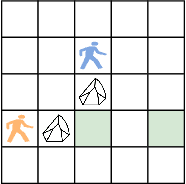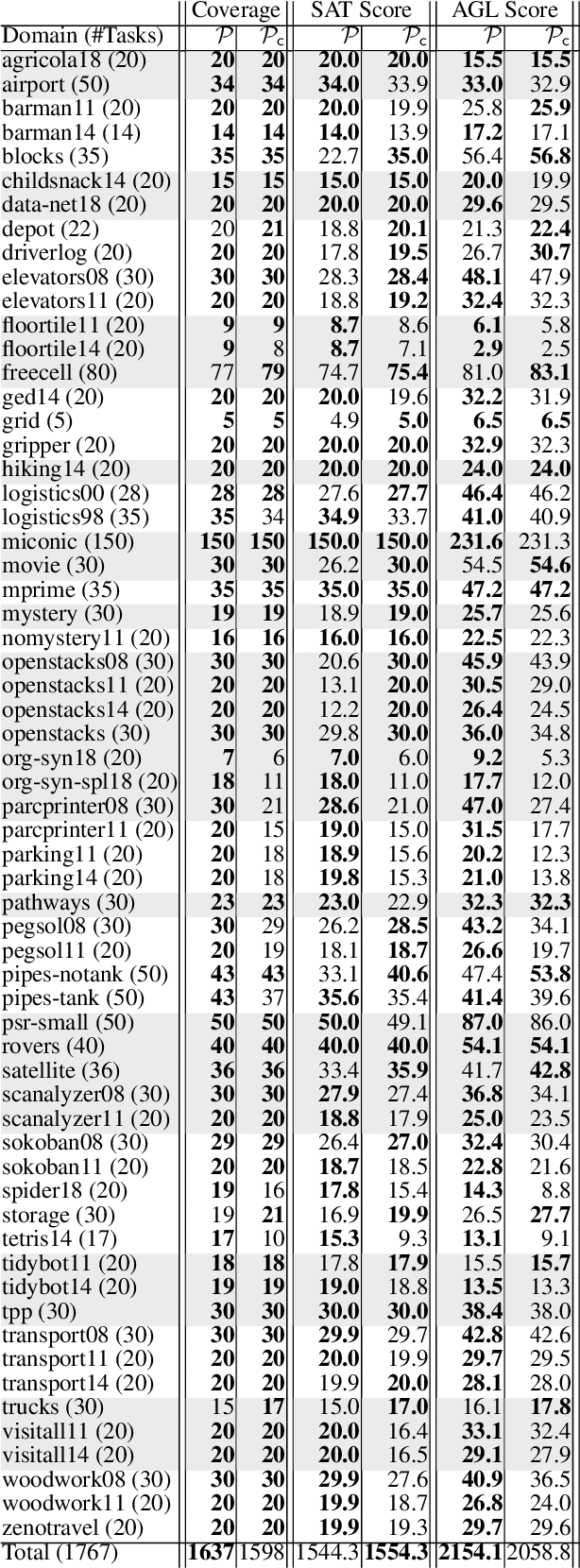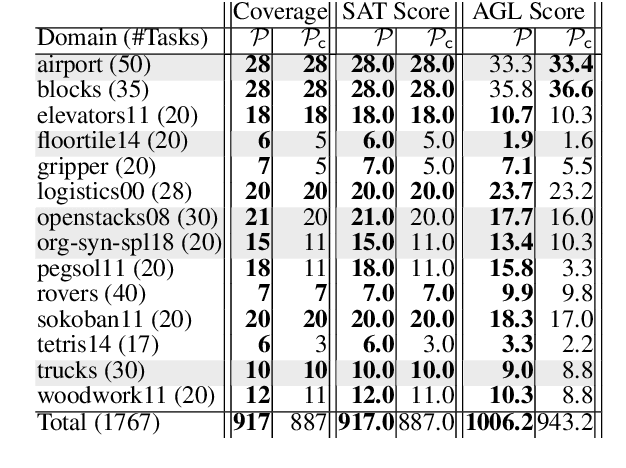Manuela Veloso
Perturb Your Data: Paraphrase-Guided Training Data Watermarking
Dec 18, 2025Abstract:Training data detection is critical for enforcing copyright and data licensing, as Large Language Models (LLM) are trained on massive text corpora scraped from the internet. We present SPECTRA, a watermarking approach that makes training data reliably detectable even when it comprises less than 0.001% of the training corpus. SPECTRA works by paraphrasing text using an LLM and assigning a score based on how likely each paraphrase is, according to a separate scoring model. A paraphrase is chosen so that its score closely matches that of the original text, to avoid introducing any distribution shifts. To test whether a suspect model has been trained on the watermarked data, we compare its token probabilities against those of the scoring model. We demonstrate that SPECTRA achieves a consistent p-value gap of over nine orders of magnitude when detecting data used for training versus data not used for training, which is greater than all baselines tested. SPECTRA equips data owners with a scalable, deploy-before-release watermark that survives even large-scale LLM training.
ChartAgent: A Multimodal Agent for Visually Grounded Reasoning in Complex Chart Question Answering
Oct 06, 2025Abstract:Recent multimodal LLMs have shown promise in chart-based visual question answering, but their performance declines sharply on unannotated charts, those requiring precise visual interpretation rather than relying on textual shortcuts. To address this, we introduce ChartAgent, a novel agentic framework that explicitly performs visual reasoning directly within the chart's spatial domain. Unlike textual chain-of-thought reasoning, ChartAgent iteratively decomposes queries into visual subtasks and actively manipulates and interacts with chart images through specialized actions such as drawing annotations, cropping regions (e.g., segmenting pie slices, isolating bars), and localizing axes, using a library of chart-specific vision tools to fulfill each subtask. This iterative reasoning process closely mirrors human cognitive strategies for chart comprehension. ChartAgent achieves state-of-the-art accuracy on the ChartBench and ChartX benchmarks, surpassing prior methods by up to 16.07% absolute gain overall and 17.31% on unannotated, numerically intensive queries. Furthermore, our analyses show that ChartAgent is (a) effective across diverse chart types, (b) achieve the highest scores across varying visual and reasoning complexity levels, and (c) serves as a plug-and-play framework that boosts performance across diverse underlying LLMs. Our work is among the first to demonstrate visually grounded reasoning for chart understanding using tool-augmented multimodal agents.
The Subset Sum Matching Problem
Aug 26, 2025Abstract:This paper presents a new combinatorial optimisation task, the Subset Sum Matching Problem (SSMP), which is an abstraction of common financial applications such as trades reconciliation. We present three algorithms, two suboptimal and one optimal, to solve this problem. We also generate a benchmark to cover different instances of SSMP varying in complexity, and carry out an experimental evaluation to assess the performance of the approaches.
Capacity Planning and Scheduling for Jobs with Uncertainty in Resource Usage and Duration
Jul 01, 2025Abstract:Organizations around the world schedule jobs (programs) regularly to perform various tasks dictated by their end users. With the major movement towards using a cloud computing infrastructure, our organization follows a hybrid approach with both cloud and on-prem servers. The objective of this work is to perform capacity planning, i.e., estimate resource requirements, and job scheduling for on-prem grid computing environments. A key contribution of our approach is handling uncertainty in both resource usage and duration of the jobs, a critical aspect in the finance industry where stochastic market conditions significantly influence job characteristics. For capacity planning and scheduling, we simultaneously balance two conflicting objectives: (a) minimize resource usage, and (b) provide high quality-of-service to the end users by completing jobs by their requested deadlines. We propose approximate approaches using deterministic estimators and pair sampling-based constraint programming. Our best approach (pair sampling-based) achieves much lower peak resource usage compared to manual scheduling without compromising on the quality-of-service.
* Please cite as: Sunandita Patra, Mehtab Pathan, Mahmoud Mahfouz, Parisa Zehtabi, Wided Ouaja, Daniele Magazzeni, and Manuela Veloso. "Capacity planning and scheduling for jobs with uncertainty in resource usage and duration." The Journal of Supercomputing 80, no. 15 (2024): 22428-22461
GenPlanX. Generation of Plans and Execution
Jun 12, 2025Abstract:Classical AI Planning techniques generate sequences of actions for complex tasks. However, they lack the ability to understand planning tasks when provided using natural language. The advent of Large Language Models (LLMs) has introduced novel capabilities in human-computer interaction. In the context of planning tasks, LLMs have shown to be particularly good in interpreting human intents among other uses. This paper introduces GenPlanX that integrates LLMs for natural language-based description of planning tasks, with a classical AI planning engine, alongside an execution and monitoring framework. We demonstrate the efficacy of GenPlanX in assisting users with office-related tasks, highlighting its potential to streamline workflows and enhance productivity through seamless human-AI collaboration.
DexUMI: Using Human Hand as the Universal Manipulation Interface for Dexterous Manipulation
May 29, 2025Abstract:We present DexUMI - a data collection and policy learning framework that uses the human hand as the natural interface to transfer dexterous manipulation skills to various robot hands. DexUMI includes hardware and software adaptations to minimize the embodiment gap between the human hand and various robot hands. The hardware adaptation bridges the kinematics gap using a wearable hand exoskeleton. It allows direct haptic feedback in manipulation data collection and adapts human motion to feasible robot hand motion. The software adaptation bridges the visual gap by replacing the human hand in video data with high-fidelity robot hand inpainting. We demonstrate DexUMI's capabilities through comprehensive real-world experiments on two different dexterous robot hand hardware platforms, achieving an average task success rate of 86%.
Towards Effectively Leveraging Execution Traces for Program Repair with Code LLMs
May 07, 2025Abstract:Large Language Models (LLMs) show promising performance on various programming tasks, including Automatic Program Repair (APR). However, most approaches to LLM-based APR are limited to the static analysis of the programs, while disregarding their runtime behavior. Inspired by knowledge-augmented NLP, in this work, we aim to remedy this potential blind spot by augmenting standard APR prompts with program execution traces. We evaluate our approach using the GPT family of models on three popular APR datasets. Our findings suggest that simply incorporating execution traces into the prompt provides a limited performance improvement over trace-free baselines, in only 2 out of 6 tested dataset / model configurations. We further find that the effectiveness of execution traces for APR diminishes as their complexity increases. We explore several strategies for leveraging traces in prompts and demonstrate that LLM-optimized prompts help outperform trace-free prompts more consistently. Additionally, we show trace-based prompting to be superior to finetuning a smaller LLM on a small-scale dataset; and conduct probing studies reinforcing the notion that execution traces can complement the reasoning abilities of the LLMs.
TADACap: Time-series Adaptive Domain-Aware Captioning
Apr 15, 2025Abstract:While image captioning has gained significant attention, the potential of captioning time-series images, prevalent in areas like finance and healthcare, remains largely untapped. Existing time-series captioning methods typically offer generic, domain-agnostic descriptions of time-series shapes and struggle to adapt to new domains without substantial retraining. To address these limitations, we introduce TADACap, a retrieval-based framework to generate domain-aware captions for time-series images, capable of adapting to new domains without retraining. Building on TADACap, we propose a novel retrieval strategy that retrieves diverse image-caption pairs from a target domain database, namely TADACap-diverse. We benchmarked TADACap-diverse against state-of-the-art methods and ablation variants. TADACap-diverse demonstrates comparable semantic accuracy while requiring significantly less annotation effort.
The Value of Goal Commitment in Planning
Mar 12, 2025


Abstract:In this paper, we revisit the concept of goal commitment from early planners in the presence of current forward chaining heuristic planners. We present a compilation that extends the original planning task with commit actions that enforce the persistence of specific goals once achieved, thereby committing to them in the search sub-tree. This approach imposes a specific goal achievement order in parts of the search tree, potentially introducing dead-end states. This can reduce search effort if the goal achievement order is correct. Otherwise, the search algorithm can expand nodes in the open list where goals do not persist. Experimental results demonstrate that the reformulated tasks suit state-of-the-art agile planners, enabling them to find better
Toward Breaking Watermarks in Distortion-free Large Language Models
Feb 25, 2025Abstract:In recent years, LLM watermarking has emerged as an attractive safeguard against AI-generated content, with promising applications in many real-world domains. However, there are growing concerns that the current LLM watermarking schemes are vulnerable to expert adversaries wishing to reverse-engineer the watermarking mechanisms. Prior work in "breaking" or "stealing" LLM watermarks mainly focuses on the distribution-modifying algorithm of Kirchenbauer et al. (2023), which perturbs the logit vector before sampling. In this work, we focus on reverse-engineering the other prominent LLM watermarking scheme, distortion-free watermarking (Kuditipudi et al. 2024), which preserves the underlying token distribution by using a hidden watermarking key sequence. We demonstrate that, even under a more sophisticated watermarking scheme, it is possible to "compromise" the LLM and carry out a "spoofing" attack. Specifically, we propose a mixed integer linear programming framework that accurately estimates the secret key used for watermarking using only a few samples of the watermarked dataset. Our initial findings challenge the current theoretical claims on the robustness and usability of existing LLM watermarking techniques.
 Add to Chrome
Add to Chrome Add to Firefox
Add to Firefox Add to Edge
Add to Edge